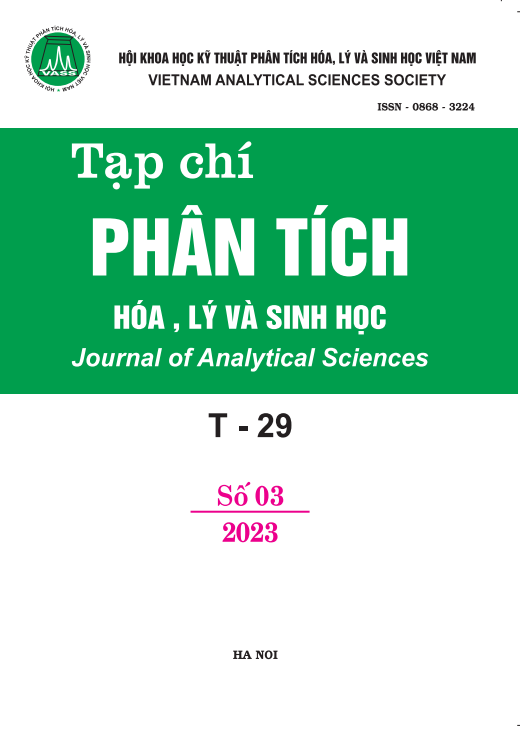NGHIÊN CỨU TẠO ĐĨA PHỦ HAPTEN-BSA DÙNG CHO PHÂN TÍCH NHANH DIOXIN BẰNG XÉT NGHIỆM MIỄN DỊCH LIÊN KẾT ENZYME
Tóm tắt
Dioxin is one of the organic compounds that are difficult to decompose, causing environmental
pollution and long-term effects on human health. The most reliable method for dioxin analysis is highresolution gas chromatography-mass spectrometry (HRGC/HRMS), but requires long analysis time, modern
equipment, and high cost. Currently, immunoassay methods have been used to rapidly detect and screen for
dioxin contamination in food and the environment. In particular, competitive ELISA is a method with high
sensitivity, good signal amplification of low concentrations and can detect many different toxic congeners in
the dioxin group. First, the antigen (hapten-BSA) was immobilized on a plate at 4°C overnight. After that,
ELISA reaction was performed on the hapten-coated wells, at room temperature. The immobilization step of
hapten-BSA onto the plate makes it difficult to analyze in the field, requires strict conditions and prolongs
the analysis time. Therefore, the creation of coated plate with hapten-BSA needs to be investigated. In this
study, coated plate with hapten-BSA was created with a hapten-BSA concentration of 0.5 µg/mL, using 5%
sucrose as a preservative, BSA concentration of blocking buffer is 0.5% and with a TCDD detection
threshold of 10 ppt in 12 month of storage. The successful creation of the coated plate with hapten-BSA
shortens the analysis time to about 4-5 hours, which is convenient for analysis and get results in the field.

